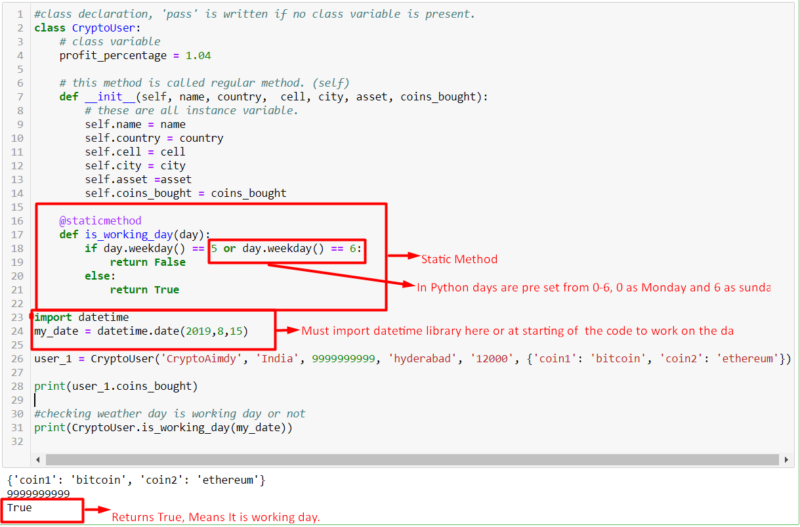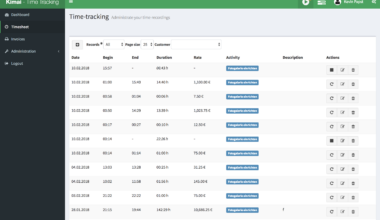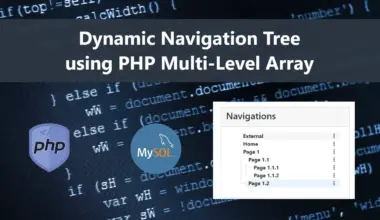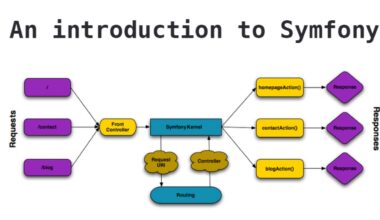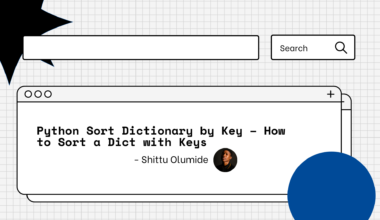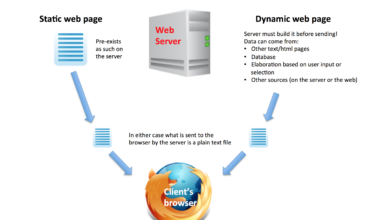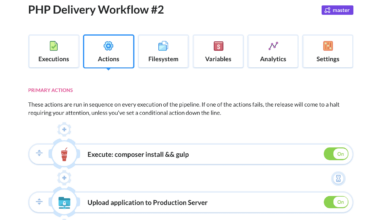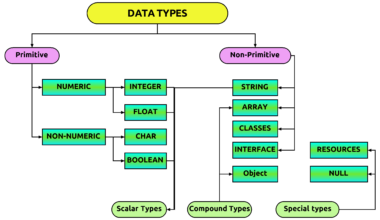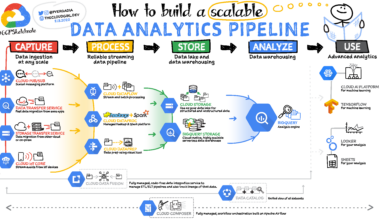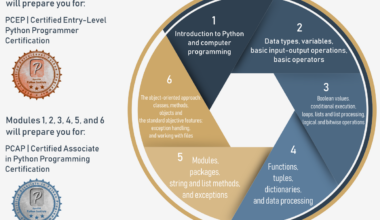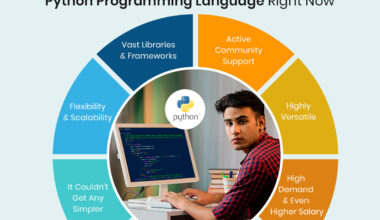What are Python Classes?
In Python, Classes are a fundamental part of Object-Oriented Programming (OOP). Classes allow you to create a blueprint for creating objects, which are instances of the class.
In simpler terms, a class is like a blueprint or a template for creating objects. When you create a class, you define the properties and methods that an object of that class will have. The properties or attributes define what the object is, and the methods define what the object can do.
Here’s an example of a simple Python class:
class Person:
def __init__(self, name, age):
self.name = name
self.age = age
def say_hello(self):
print("Hello, my name is", self.name, "and I am", self.age, "years old.")
person = Person("Alice", 25)
person.say_hello() # output: Hello, my name is Alice and I am 25 years old.
In the above example, we created a class called “Person” with two attributes, “name” and “age”. We also defined a method called “say_hello” that prints out a message with the person’s name and age. We then created an instance of the class called “person” and called the “say_hello” method on it.
Python classes have many uses, and they are essential for creating complex programs. They allow you to organize your code, reuse code, and create objects that interact with each other.
In the next section, we’ll discuss the benefits of using Python classes in more detail.
Benefits of Using Python Classes
Python classes offer several benefits that make them a crucial component of object-oriented programming. Here are some of the key benefits of using Python classes:
Code Reusability
One of the primary benefits of using classes is code reusability. You can create a class once and use it in multiple parts of your program. This approach saves time and effort and also ensures that your code is consistent and organized.
For example, if you are working on a project that involves creating multiple objects with similar properties, you can create a class that defines those properties and reuse it to create all the objects.
Encapsulation
Encapsulation is another critical benefit of using classes. It refers to the ability to hide the implementation details of a class from the outside world and only expose the necessary methods and properties. Encapsulation helps prevent unintentional modification of data and improves data security.
In Python, you can use access modifiers like public, private, and protected to implement encapsulation.
Abstraction
Abstraction is the process of reducing complexity by hiding unnecessary details while highlighting essential features. Python classes allow you to abstract away complex functionality and provide a simplified interface.
For example, if you are working on a project that involves sending emails, you can create a class that abstracts away the complexities of email sending and provides a simple interface for sending emails.
Polymorphism
Polymorphism is the ability of objects of different classes to be used interchangeably. Python classes support polymorphism, enabling you to create flexible and modular code.
For example, if you have two classes that have a method with the same name, you can use these classes interchangeably.
Inheritance
Inheritance is the ability of a class to inherit properties and methods from a parent class. In Python, you can use inheritance to create new classes that are based on existing classes.
Inheritance simplifies code by reusing attributes and methods of the parent class, reducing code duplication. It also makes code more modular and scalable.
Improved Code Organization
Python classes help improve code organization by breaking down complex code into smaller, more manageable parts. Classes allow you to group related data and functions together, making it easier to understand and modify the code.
Conclusion</h3
Inheritance and Polymorphism in Python Classes
Inheritance and polymorphism are two critical concepts of object-oriented programming that Python classes support. Inheritance allows a new class to be based on an existing class, while polymorphism enables objects of different classes to be used interchangeably.
Inheritance
Inheritance is the process by which a new class is created from an existing class. The new class is called the child class or subclass, while the existing class is called the parent class or superclass. The child class inherits all the properties and methods of the parent class and can also add new properties and methods.
In Python, you can create a subclass by defining a new class and specifying the parent class in parentheses after the class name. Here’s an example:
class Animal:
def __init__(self, name):
self.name = name
def speak(self):
raise NotImplementedError("Subclass must implement abstract method")
class Dog(Animal):
def speak(self):
return "Woof!"
class Cat(Animal):
def speak(self):
return "Meow!"
dog = Dog("Rufus")
cat = Cat("Whiskers")
print(dog.speak()) # output: Woof!
print(cat.speak()) # output: Meow!
In the above example, we created a class called “Animal” with an abstract method called “speak”. We then created two subclasses, “Dog” and “Cat”, that inherit from the “Animal” class and implement the “speak” method. We created instances of the “Dog” and “Cat” classes and called their respective “speak” methods.
Polymorphism
Polymorphism is the ability of objects of different classes to be used interchangeably. Python classes support polymorphism, enabling you to create flexible and modular code.
Polymorphism is achieved through the use of inheritance and method overriding. In method overriding, a subclass can override a method of its parent class with its implementation. Here’s an example:
class Shape:
def area(self):
pass
class Rectangle(Shape):
def __init__(self, length, width):
self.length = length
self.width = width
def area(self):
return self.length * self.width
class Circle(Shape):
def __init__(self,Best Practices for Python Class Design
Python classes are a powerful tool for creating complex programs, but they can also be challenging to use if you don’t follow best practices for class design. Here are some tips to help you design Python classes that are easy to use, maintain, and understand.
Follow the Single Responsibility Principle
The single responsibility principle is a design principle that states that a class should have only one reason to change. In other words, a class should have only one responsibility.
By following this principle, you can create classes that are easier to understand, maintain, and modify. If you find that a class has too many responsibilities, consider breaking it down into smaller, more specialized classes.
Use Descriptive and Consistent Naming Conventions
Naming conventions are essential in Python class design. Use descriptive and consistent names for classes, methods, and attributes to make your code more readable.
For example, if you’re creating a class to represent a car, use a name like “Car” rather than something generic like “Vehicle.” Similarly, use names like “drive” and “stop” for methods that perform those actions, rather than something obscure like “do_stuff.”
Keep Classes Simple and Focused
Classes should be simple and focused on doing one thing well. Avoid creating classes that are too complex or have too many methods and attributes.
If a class has too many methods, consider breaking it down into smaller, more specialized classes. Similarly, if a class has too many attributes, consider grouping related attributes into separate classes.
Use Class Variables Sparingly
Class variables are variables that are shared by all instances of a class. While they can be useful, they can also lead to unexpected behavior if used incorrectly.
Use class variables sparingly, and only when they are necessary. If you find that you need to use a class variable, make sure that it is well-documented and that its behavior is easy to understand.
Document Your Classes and Methods
Documentation is essential in Python class design. Make sure to document your classes and methods so that other developers can understand how to use them.
Docstrings are a useful way to document your classes and methods. A docstring is a string that appears at the beginning of a class or method definition and provides information on what the
Final Thoughts
Python classes are the backbone of object-oriented programming, and they offer several benefits that make them a crucial component of modern programming. By using classes, you can organize your code, reuse code, and create objects that interact with each other.
When designing Python classes, it’s essential to follow best practices, such as the single responsibility principle, using descriptive and consistent naming conventions, keeping classes simple and focused, using class variables sparingly, and documenting your classes and methods.
Remember that Python classes are a powerful tool, but they can also be challenging to use if not appropriately designed. By following best practices and using classes effectively, you can create flexible, modular, and maintainable code that can handle complex programming tasks.
In conclusion, Python classes are a fundamental concept in object-oriented programming, and mastering their use can take your programming skills to the next level. Whether you’re a beginner or an experienced developer, understanding Python classes and how to use them effectively is a valuable skill that can help you create robust and scalable programs. So, keep practicing, and soon enough, you’ll be able to create complex programs with ease using Python classes.
